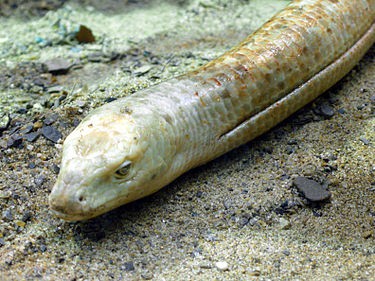Type the name of the breed you're looking for below
[wpdreams_ajaxsearchlite] Don't see the breed your're looking for? Click here and let us know!
European Legless Lizard
| Place of Origin and Range | The sheltopusik, also spelled scheltopusik, or European legless lizard is a large glass lizard found from southern Europe to Central Asia. |
| Description | This lizard can reach a length of 135 cm. It has a tan colouration, paler on the ventral surface and the head, with a ring-like/segmented appearance that makes it look like a giant earthworm with a distinctive fold of skin down each side called a lateral groove. Small (2 mm) rear legs are sometimes visible near the cloaca. Though the legs are barely discernible, they can be easily distinguished from a snake by their ears, eyelids, and ventral scales. |
| Morph Patterns Available | Yes |
| Adult Size | Can grow up to 3.6 ft (1.1 m) |
| Accommodation | They spend most of their waking hours basking in the sun, hiding in underground chambers at daytime or when danger appears. They tend to establish themselves in hilly, rocky areas with good shelter and accessible vegetation. These lizards tend to bask in areas with surface temperatures of over 50 °C (120 °F). A dedicated room with lots of rocks and substrate is the best idea. No water dish, Just plenty of leafy greens. |
| Lifespan | Can live up to 20 years |
| Feeding / Diet | Eats insects. These lizards acquire most of the water they need from the vegetation they ingest. |
| Breeding | About 10 weeks after mating, the female lays about eight eggs which she hides under bark or a stone, and often guards them. The young hatch after 45 – 55 days. They average about 15 cm long and usually start to eat after four days. |



